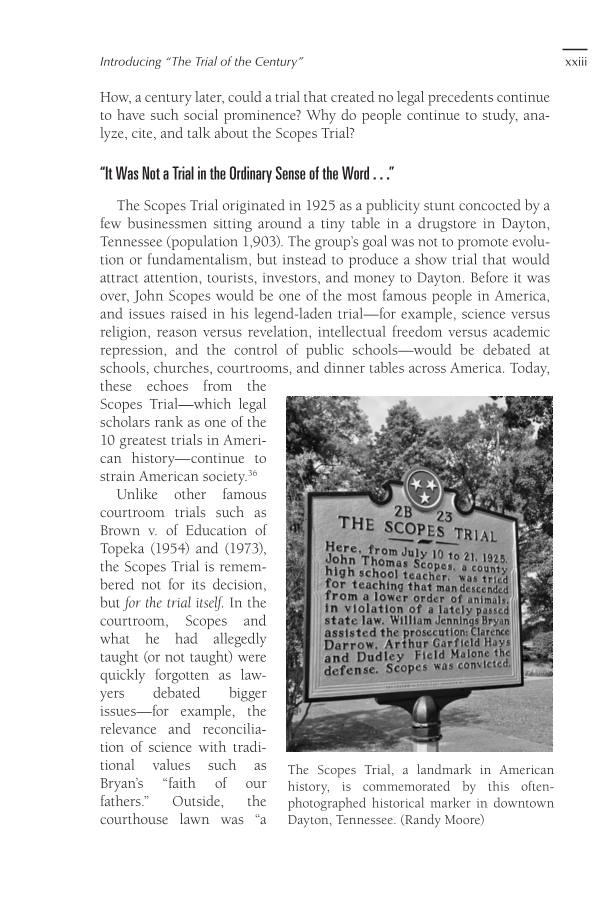Introducing “The Trial of the Century” xxiii How, a century later, could a trial that created no legal precedents continue to have such social prominence? Why do people continue to study, ana- lyze, cite, and talk about the Scopes Trial? “It Was Not a Trial in the Ordinary Sense of the Word . . .” The Scopes Trial originated in 1925 as a publicity stunt concocted by a few businessmen sitting around a tiny table in a drugstore in Dayton, Tennessee (population 1,903). The group’s goal was not to promote evolu- tion or fundamentalism, but instead to produce a show trial that would attract attention, tourists, investors, and money to Dayton. Before it was over, John Scopes would be one of the most famous people in America, and issues raised in his legend-laden trial—for example, science versus religion, reason versus revelation, intellectual freedom versus academic repression, and the control of public schools—would be debated at schools, churches, courtrooms, and dinner tables across America. Today, these echoes from the Scopes Trial—which legal scholars rank as one of the 10 greatest trials in Ameri- can history—continue to strain American society.36 Unlike other famous courtroom trials such as Brown v. of Education of Topeka (1954) and (1973), the Scopes Trial is remem- bered not for its decision, but for the trial itself. In the courtroom, Scopes and what he had allegedly taught (or not taught) were quickly forgotten as law- yers debated bigger issues—for example, the relevance and reconcilia- tion of science with tradi- tional values such as Bryan’s “faith of our fathers.” Outside, the courthouse lawn was “a The Scopes Trial, a landmark in American history, is commemorated by this often- photographed historical marker in downtown Dayton, Tennessee. (Randy Moore)
Document Details My Account Print multiple pages
Print
You have printed 0 times in the last 24 hours.
Your print count will reset on at .
You may print 0 more time(s) before then.
You may print a maximum of 0 pages at a time.

























































































































































































































































































































